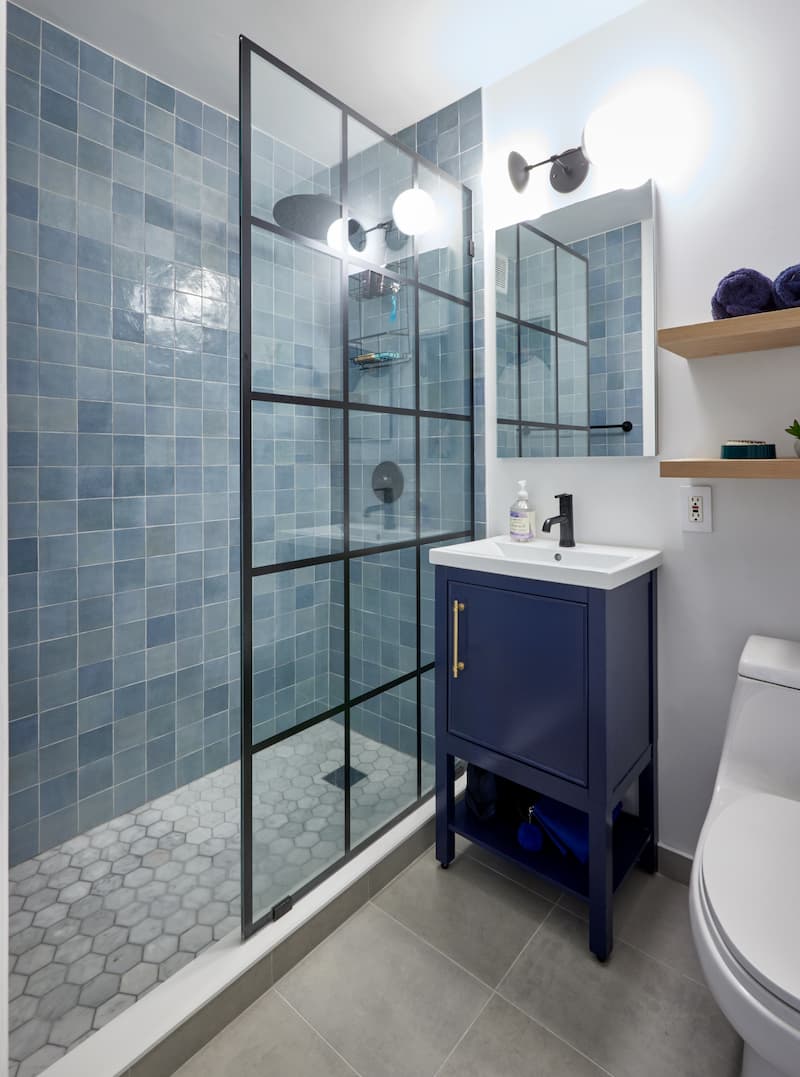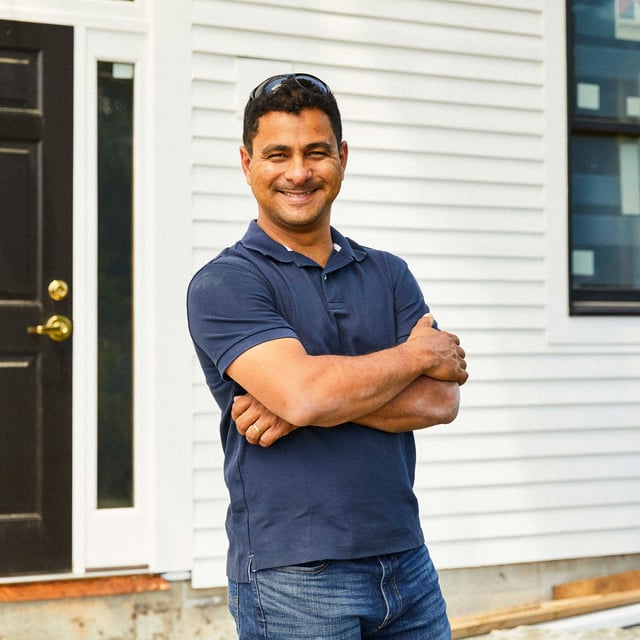
In This Article
A mother-in-law suite—also known as an in-law suite or in-law apartment—is basically a private living space on your property. These were originally created for multigenerational living, but over time, people have found all sorts of creative uses. Some turn them into short-term rentals, while others use them to give adult children a little independence while keeping them close.
Thinking about building one? It’s a great idea—but definitely not a simple weekend project. You’ll need to check zoning laws, come up with a budget, and decide if you’re starting from scratch or converting an existing space. For example, figuring out the cheapest way to build a mother-in-law suite might mean transforming part of your home instead of adding on. Or perhaps you’re wondering how to convert a two-car garage into a mother-in-law suite. Either way, the planning stage is where it all begins.
Need help brainstorming? Block Renovation has compiled expert-backed advice and numerous mother-in-law suite ideas to get you started.
Ideas for Where (and How) to Build the In-Law Suite
When you’re putting together an in-law suite, it’s not just about taking on some square footage. You’re building an actual living space—one that’s got to work on its own. That usually means a bedroom, a private bathroom, and, more often than not, a small kitchen or kitchenette.
As for size? You don’t need a ton of space. A small mother-in-law suite in the 500 to 600 square foot range can do the trick. There’s enough room for the basics without things feeling too tight—especially if the layout’s done right.
Ideas for where to build your in-law suite include:
Basement Conversion
Pros: Got an unfinished basement? That’s a great starting point. It’s usually a big, open space that you can shape however you want—and it’s often a lot cheaper than adding a full in-law suite. Plus, basements stay pretty cool in the summer and hold heat in the winter, so they’re naturally a bit more energy efficient.
Another win: some basements already have plumbing nearby, which makes adding a bathroom or kitchenette way easier (and cheaper). And unlike an attic, it’s not too hard to create a private entrance down there. If privacy matters—say, for a mother-in-law suite or a short-term rental—that's a big plus.
Cons: Addressing potential moisture and mold issues is paramount, starting with a thorough waterproofing of the basement. Moreover, limited natural light may necessitate creative solutions, and local building codes may require the installation of specific egress windows for safety, so careful planning is crucial. It may be easy to hear activity from the above levels—as people walking across the floorboards overheard—so soundproofing is a good idea for any basement-based in-law suite. Lastly, the basement is where many home’s HVAC units are stored, consuming valuable floor space.
How to budget for a basement-to-in suite conversion: If you’re working with about 1,000 square feet, finishing a basement can cost anywhere from $7,000 to $23,000, according to our basement finishing cost guide. That said, it really depends on the condition of your basement to begin with.
Need to deal with moisture? Run all new plumbing? Upgrade the electrical? That can push your costs way higher—up to $50,000 or more, especially in pricier areas like New York or the Bay Area. The more work your space needs, the closer you’ll get to that upper end. So it’s worth getting a contractor in early to get a real sense of what you're working with.
Garage Conversion
Pros: One obvious perk of converting a garage into an in-law suite is that it’s a readily available, detached, or semi-detached space. This offers a distinctly separate living area with minimal disruption to the main house. Moreover, the structure may already have electrical wiring, simplifying the setup for essential amenities.
Cons: Insulation and climate control may be lacking, requiring upgrades to ensure year-round comfort for your in-law suite. The garage door opening will likely need to be replaced with a more traditional wall and window, adding to the renovation costs.
Keep in mind that repurposing the garage will also mean sacrificing valuable parking or storage space. Finally, zoning regulations may restrict the installation of a full kitchen, limiting the suite's independence.
How to budget converting a garage to an in-law suite: As detailed in How to Convert Your Garage into a Living Space, such projects can cost as much as $50,000.
Attic Conversion
Pros: Using the attic can be a smart idea to turn wasted space into something functional, such as an in-law suite. It’s often overlooked, but with the right design, it can feel like a cozy hideaway. If you’ve got windows up there, you might even score some great natural light or a view. And unlike basements or garages, your attic might already be partially finished, which can make things easier— and cheaper —to start with.
Cons: The biggest drawback? Headroom. Some attics just don’t have enough of it to make the space feel comfortable. And because it's up a flight of stairs, it’s not ideal if you're planning the in-law suite for an older relative.
Plus, insulating an attic properly can also be tricky—and if you don’t get it right, it could be hard to keep the space warm in winter or cool in summer. And since it’s likely only accessible from inside the main home, it doesn’t offer much in terms of privacy or independence.
How to budget converting your attic to an in-law suite: Similar to the first two ideas, attic renovation costs can be close to $50,000, especially for larger undertakings like building an in-law suite.
Extra Wing or Guest Bedroom
Pros: If you’ve got a guest room or extra wing already built into your home, this can be one of the simplest ways to create an in-law suite. It usually means less construction since the walls, wiring, and plumbing are already there—or close by. That makes it easier— and faster —to add a small bathroom or even a kitchenette.
Cons: The downside? You’re giving up part of your main living space, which can be a tough trade-off depending on how much room you’ve got. And since it’s connected to the main house, privacy might be an issue—for you and whoever’s living there. Not ideal if independence is a priority.
Accessory Dwelling Unit (ADU)
Pros: If you’re looking for total privacy and a true stand-alone setup, an ADU is hard to beat as an idea. It's a fully self-contained unit, separate from your main house, providing everyone with their own space. Plus, you can design it however you want—from layout to finishes—so it works perfectly for whoever’s moving in.
Cons:That kind of freedom comes with a price. ADUs are usually the most expensive option, and between construction, permits, and utility hookups, the costs add up fast. Zoning laws can also be a headache, depending on where you live. Oh—and don’t forget that adding an ADU may bump up your property taxes, too.
How much do ADUs typically cost? Further elaborated upon in What is an ADU? The Complete ADU Construction Guide, building an ADU can cost anywhere from $100,000 to $400,000 based on the size and sophistication.
Questions to Ask Yourself When Determining the Ideal Placement of Your In-Law Suite
- What in-law suite setup options can accommodate a private entrance?
- Which placement has the most existing infrastructure in place, including wiring, plumbing, insulation, and more?
- What part of the property will grant the most quiet and privacy for everyone?
- What will I have to sacrifice to make way for the in-law suite?
- What setup is the most cost-effective, considering both initial construction and long-term operating expenses?
- Does my setup enable aging in place?
- How will each placement impact my property value and overall aesthetics?
- Will it comply with all local zoning regulations and building codes?
- How much of my backyard (or front yard) will be lost to this placement?
Of course, no major decision should be made without consulting with a general contractor, ideally one familiar with local zoning regulations.
Design a Home That’s Uniquely Yours
Block can help you achieve your renovation goals and bring your dream remodel to life with price assurance and expert support.
Get Started
Renovation & Design Ideas for Making the In-Law Suite Comfortable
- Don’t forget about soundproofing: Since the in-law suite is often attached to the main house, sound can be a real issue. No one wants to hear footsteps or conversations through the walls. A little investment in insulation, solid-core doors, and noise-dampening materials can go a long way in keeping the peace—for everyone.
- Add a real kitchenette—not just a microwave: Even a small space deserves a functional kitchen. If your loved one (or renter) can cook their own meals, it gives them a sense of independence. A compact fridge, two-burner stove, and some counter space can make the suite feel like a full home, not just an add-on.
- Build in storage with the user in mind: Whether it's drawers that are easy to reach or cabinets that don’t require a step stool, storage should be designed around the person using it. Especially if mobility is an issue, every inch should work smart.
- If you can, give them outdoor space: A little patio or garden nook makes a big difference for an in-law suite. Add a chair, maybe some potted plants—it doesn’t have to be a fancy idea. Just having a spot to step outside and relax adds to the quality of life.
- Use flexible furniture to save space: In a smaller in-law suite, every piece of furniture needs to earn its keep. A fold-out table, a sofa bed, and even wall-mounted desks can keep things open during the day and cozy at night.
- Establish separate meters for electricity, water, and gas: This one is more practical—if you ever rent out the in-law suite space, having its own water, electric, and gas meters makes billing easier. Plus, it could help come tax time.
- Think about mood-setting design elements: If the in-law suite is for an aging parent, ask: what would make this space feel like home? A favorite wall color, a reading chair under a good lamp, or even space for their hobby can make all the difference.
Ways to Make Your In-Law Suite Senior-Friendly
Even if your loved one doesn’t need accessibility features right now, it’s smart to plan ahead. Building with universal design in mind makes the space safer and more comfortable for years to come. Here are a few ideas to keep in mind:
- Plan for grab bars later—even if you’re not installing them now. Reinforce the bathroom walls near the toilet and shower during construction so bars can be added easily when needed.
- Make doorways wide enough. Aim for 36 inches. It’s the sweet spot for wheelchair access and just makes the space feel more open.
- Lower the countertops a bit. Somewhere around 30–34 inches works well for anyone using a chair or walker.
- Swap knobs for levers. Lever-style handles are way easier for folks with arthritis or limited grip strength.
- Lose the shower lip. A no-step, zero-threshold shower isn’t just stylish—it helps prevent trips and falls.
- Go with a handheld showerhead. Mount it on an adjustable bar so it works for everyone, seated or standing.
- Pick a comfort-height toilet. Look for one that’s 17–19 inches tall—it’s a small change that makes a big difference.
- Think about outlet height. Place electrical outlets and light switches at a height that is easy to reach—between 15 and 48 inches from the floor.
- Use simple, readable controls. Big buttons, easy-to-read thermostats, and intuitive lighting systems go a long way.
- Add good lighting where it counts. The kitchen, bathroom, and workspaces should have focused lighting to improve visibility.
- Use contrast to your advantage. Dark floors with light walls—or vice versa—can help anyone with low vision move around more easily.
- Avoid tight, narrow walkways. Ensure there is sufficient space to turn or maneuver with a cane, walker, or wheelchair.
- And don’t forget the outside—make the path to the entrance smooth, well-lit, and easy to navigate. That first step sets the tone for everything inside.
Suggested Steps to Planning and Building Your In-Law Suite
Step 1: Picture where you want the in-law suite to go:
Before getting into the nitty-gritty, take a moment to imagine where the in-law suite might live on your property. Backyard? Over the garage? Attached to the main house? Think about privacy, how close it is to plumbing and electricity, and whether it would be easy to access. Having a rough idea will help when you start talking to contractors.
Step 2: Talk to a general contractor—early.
Seriously, bring someone in sooner rather than later. A good contractor can tell you what’s realistic, what might be tricky, and how local zoning laws might affect your plan. They’ll help you avoid headaches— and surprise costs —down the road.
Step 3: Work out a budget that includes everything. Sit down with your contractor and/or designer to map out the in-law suite, including labor, permits, materials, finishes, appliances, and even a little cushion for the unexpected. You don’t want to be caught off guard halfway through the build.
Step 4: Get the design locked in—and those permits sorted. Once you’ve nailed down the layout, your contractor should help with permits. They’ll know what local zoning laws allow (or don’t) and what hoops you’ll need to jump through. Definitely let them take the lead here.
Step 5: Choose finishes that work for everyone. Now, the fun part. Think style, yes—but also durability, accessibility, and comfort. If this in-law suite is for a loved one, involve them in the choices. It helps them feel like the in-law suite is truly theirs.
Step 6: Set a timeline—and stay in touch. Renovations almost always run long. The best way to stay sane? Set clear expectations, keep communication open with your contractor, and check in regularly. A few simple conversations can save weeks of confusion later.
Additional Considerations for Building an In-Law Suite Beyond the Renovation
Building an in-law suite can seriously upgrade how your home functions—but it’s not just about the construction. There are other costs and considerations that pop up once the suite is finished.
It’ll cost more than a regular reno: Why? Because it’s not just a room. A true mother-in-law suite needs a bathroom, maybe a kitchenette, and its own living space. All of that adds up—appliances, labor, plumbing, electrical work. Don’t be surprised if the final number is higher than a typical remodel.
Expect higher utility bills: You're basically adding a mini home onto your property, which means more power, water, and gas usage. It’s smart to factor this into your long-term budget—especially if the suite is occupied year-round.
Call your insurance company: Once the in-law suite is built, your policy may need to be updated. Rates might go up depending on whether a relative lives there or you plan to rent it out. Either way, make sure you're covered.
Your property taxes could rise, too: Adding square footage—and a fully functional unit—can increase your home's assessed value. More value usually means more taxes. It's something to ask about early in the planning process.
Greater regulations if you rent out your in-law suite: Just because you're allowed to build a mother-in-law suite, or ADU doesn’t automatically mean you can rent it out. Some cities limit rentals to family members only, and violating those rules can lead to fines or worse. So, double-check the local laws before listing it.
Work With Block Renovation for a Stress-Free In-Law Suite Build
Building an in-law suite can feel like a lot. Between the zoning rules, permits, materials, and budget decisions, it’s easy to get overwhelmed. Block Renovation helps take the pressure off and brings structure to the entire process.
- Transparent Budgeting and Timelines: Block gives you a clear, upfront view of what your in-law suite will cost—and when things will happen. You’ll know what to expect from day one, so there are fewer surprises along the way.
- Experienced Contractor Matching: Not every contractor is familiar with building in-law suites or ADUs. Block connects you with vetted professionals who know how to handle the unique plumbing, layout, and code requirements these projects involve.
- Support to Avoid Common Pitfalls: Permitting delays, unexpected costs, and communication breakdowns are all too common in renovations. Block’s team helps spot and resolve those issues early, saving time and stress later on.
- Streamlined Project Management Tools: With Block’s tech platform, you don’t have to juggle emails or guess what's next. Everything—from scheduling to payments—is in one place so that you can stay on top of your project without the chaos.
Remodel with confidence through Block
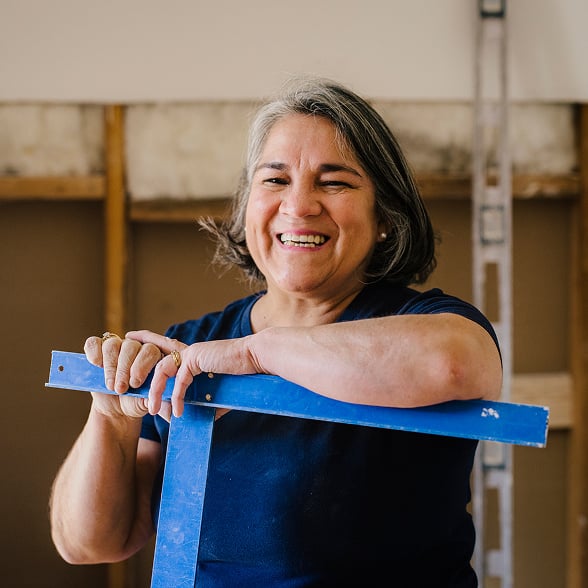
Connect to vetted local contractors
We only work with top-tier, thoroughly vetted contractors

Get expert guidance
Our renovation consultants offer expert advice, scope review, and ongoing support as needed
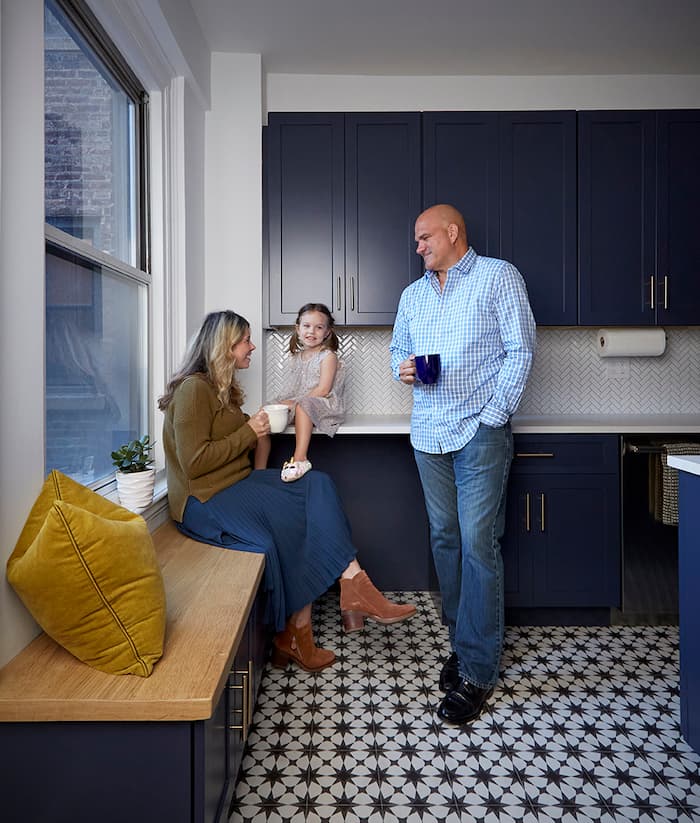
Enjoy peace of mind throughout your renovation
Secure payment system puts you in control and protects your remodel

Written by Block Renovation
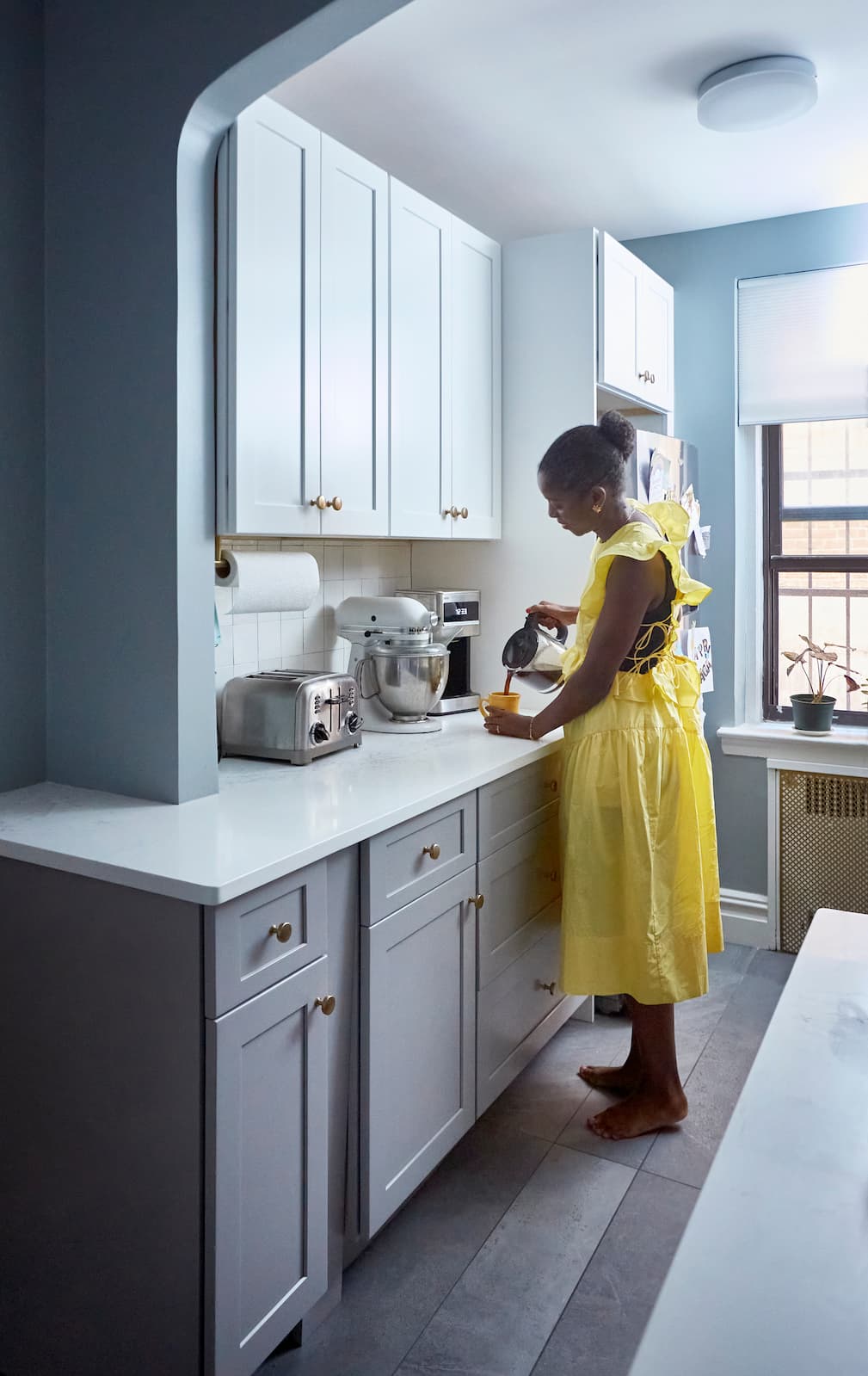
Renovate confidently with Block
Easily compare quotes from top quality contractors, and get peace of mind with warranty & price protections.
Thousands of homeowners have renovated with Block

4.5 Stars (100+)

4.7 Stars (100+)

4.5 Stars (75+)
Renovate confidently
- Top quality contractors
- Warranty & price protections
- Expert resources

